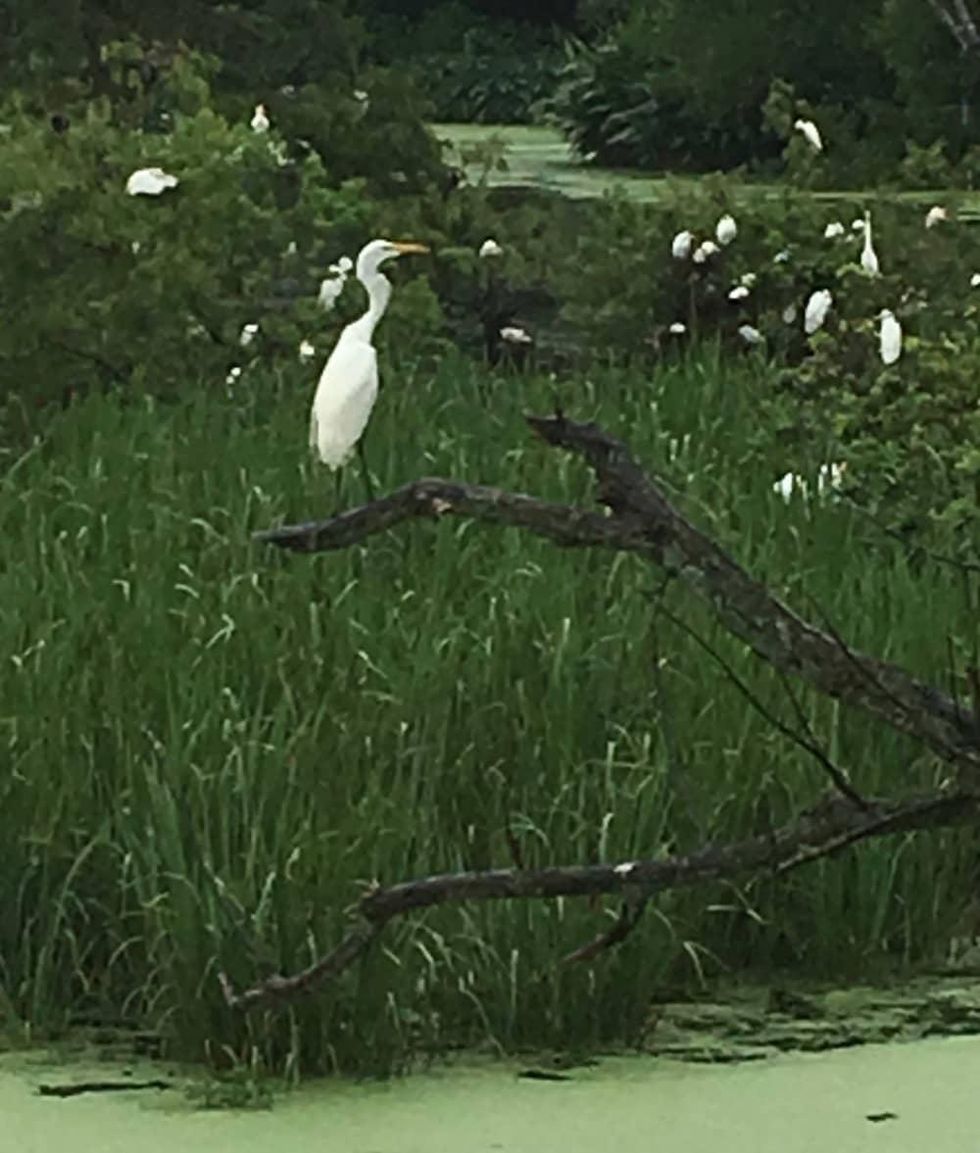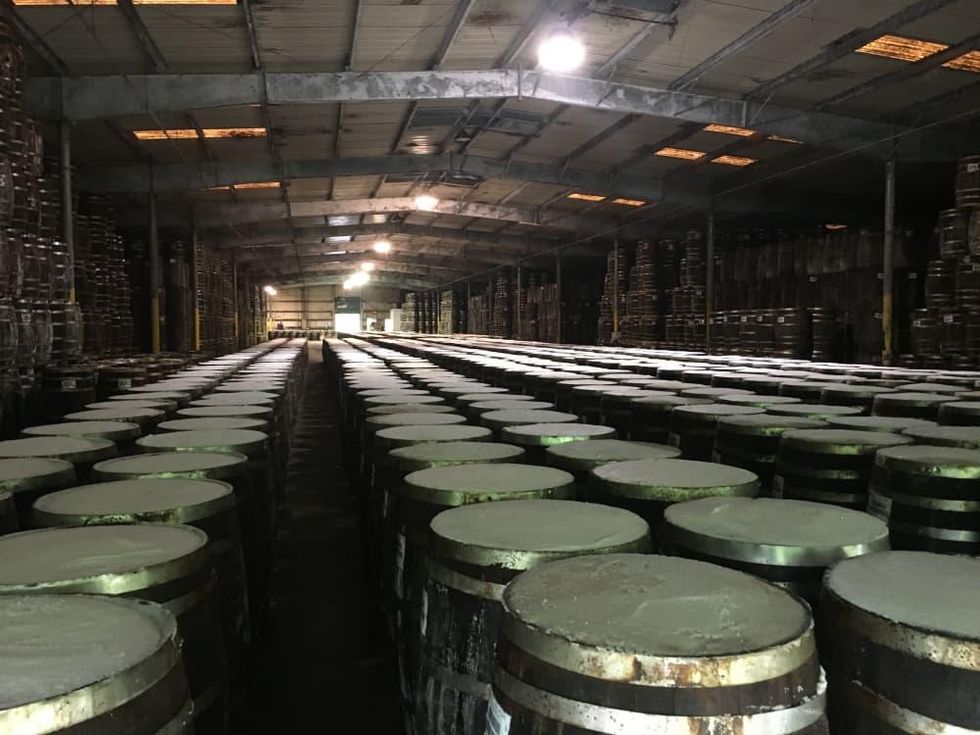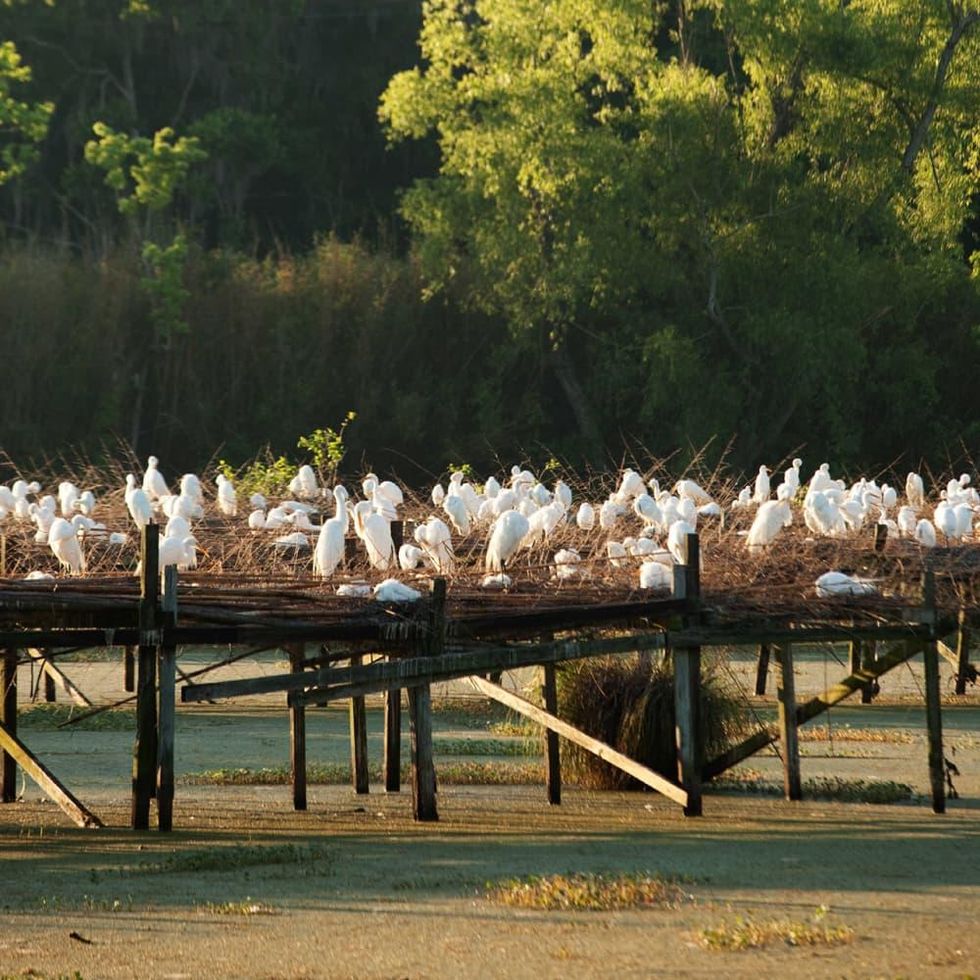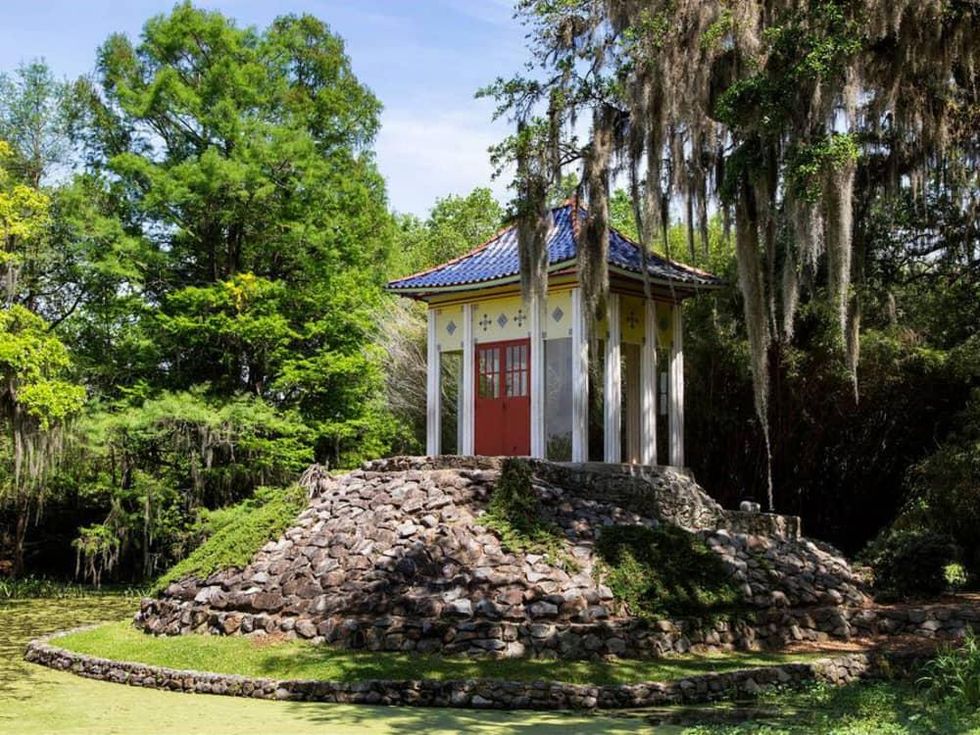Fit for a Queen
Hot times on Avery Island: Spicy fun, great bird and bear watching in birthplace of Tabasco
On the Venn diagram of tourist spots perfect for birders and hot sauce lovers, I would bet the only intersection lies on Avery Island, Louisiana.
I come from a family of avid birders. Many of them, born and bred in New Orleans, also love their pepper-laced cuisine. So on my way to Crescent City earlier this summer with some of those said family members, a detour to the birthplace of Tabasco Pepper Sauce, which is also the home of a century old egret refuge, seemed worth a half-a-day-trip.
While I like birds on general they’re-pretty principle and enjoy mild peppery goodness in some dishes, I’m not a fanatic. I do, however, love bizarre and strange Gulf Coast tourist attractions and Avery Island certainly qualifies.
The first wonderfully weird aspect about Avery Island is that the “island” moniker seems somewhat honorific. About a four-hour drive from Houston, and 45 minutes south from Lafayette, this lush (is)land lies on a salt dome that creates a kind of 2,000-acre hill rising 163 feet above the bayous and marsh. So while technically the land is surrounded by water and swamp, we certainly didn’t need a boat to get there. Avery is one of Louisiana’s five salt domes, 200-million-year-old remnants of an ancient saltwater seas, and humans have been digging for salt on it for hundreds of years, continuing to this day.
Spicy Explorations
The “island” offers two main attractions for visitors, the McIlhenny Company Tabasco museum and tour of the facilities for the hot sauce aficionados and Jungle Gardens for nature lovers.
Arriving at Avery, we first hit the visitors’ center to begin our self-guided pepper tour. And yes, the $12 ticket got us cute little Tabasco sample bottles. The “Avery Island Experience” tour allows visitors to take a deep Tabasco dive into salt dome geological, and McIlhenny family, history and then to go step-by-step into the sauce making process.
The Original Red Tabasco Sauce used in a million restaurants across the world contains only three key ingredients, peppers, vinegar and salt, so I wasn’t exactly expecting a dangerous and wacky Wonka factory-type tour, but found myself surprisingly fascinated by the spicy operation throughout, especially while maintaining a vigilant lookout for bears. No really, during the short walk to the greenhouse to view a species selection of pepper plants, we passed by a Louisiana black bear “frequenting area” near a definitely non-indigenous bamboo grove.
Like wine, part of the Tabasco sauce creation requires aging. Once the red peppers are picked and then churned into mash, the resulting mush is aged in white oak barrels for up to three years. Taking a peek into the storage building at the rows upon rows of barrels all covered with Avery Island salt for preserving was a bit like gazing into Tabasco infinity. I also learned that coopering, the making of barrels, casks and buckets is a real job in the 21st century and when I grow up I don’t want to be one as much as put that title on my business cards.
Heading into the main plant facilities, I paused to read what looked to be an official royal seal decreeing McIlhenny Tabasco the official pepper sauce supplier to Queen Elizabeth. I guess even the Queen’s likes it hot on occasion.
We then got an up close — but behind glass walls — look at the blending and bottling process. Also in the main building I got to pet a salt boulder, walk through a simulated salt mine tunnel and admire a giant hanging red jalapeño pepper and mosquito sculptures.
Before ending our Tabasco explorations, we stopped by Avery’s third attraction, the gift shop. Personally, I always consider a good gift shop attractive, especially one that’s less a shop and more of a hot sauced themed emporium. Sure, I found pepper decorated T-shirts and boxer shorts, but the range of types of food that can be laced with Tabasco really astounded me. Go for the sauce tasting station; stay for the jalapeño and raspberry chipotle soft serve ice cream and pepper-flavored cola.
In the Jungle
Next (and nest) up, our tour went to the birds, as we headed two minutes down the road to Jungle Gardens. The 170-acre Jungle Gardens can be explored by foot, but Edward Avery “Ned” McIlhenny who opened the private park for visitors in the 1930s, designed the route for a leisurely sightseeing drive.
The park affords lots of opportunities to stop for short hikes to look for wildlife while wandering along the shores of lagoons and through smaller gardens. I spotted rabbits, deer, and possible a gator, though it might have been a rather gnarly log.
The Jungle highlight and Ned McIlhenny’s conservation legacy is Bird City, a manmade rookery built over a small lake for migrating snowy egrets. McIlhenny began Bird City more than a century ago with eight egret chicks he hand-raised and then released for their fall migration. Six returned in the spring to nest and become the founding egrets of Avery Island’s vast avian-polis of today.
Like the Tabasco tour, Jungle Gardens also presents moments of weird wonderment. For example, a beautiful, 900-year-old (according to the brochure) Buddha statue, with a rather murky history possibly involving the 12th century Chinese Emperor Hui-tsung, warlords, and a late 19th century trip to New York, meditates over a quiet garden of Chinese juniper, bamboo and live oaks.
The journey this Buddha took to land on an ancient Louisiana salt dome – where they make the Queen’s preferred spicy condiment – to hang out with the bears, alligators and egrets remains something of a mystery, but he seemed quite at home in the curious swampy loveliness that is life on Avery Island.





